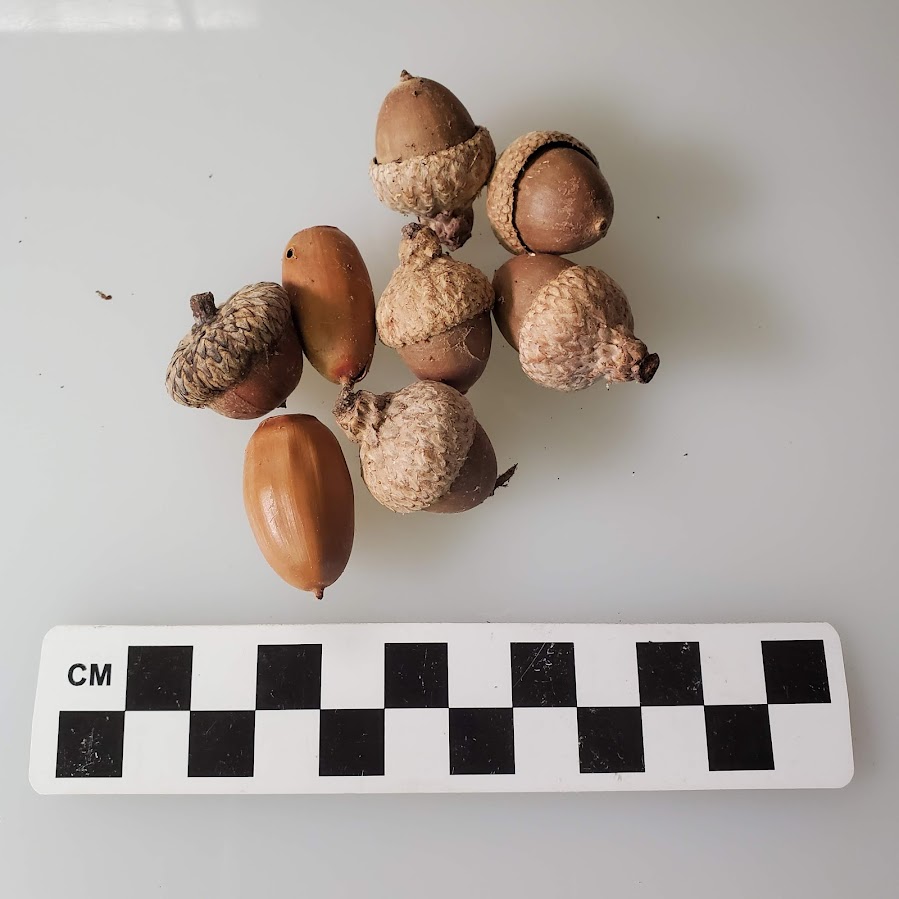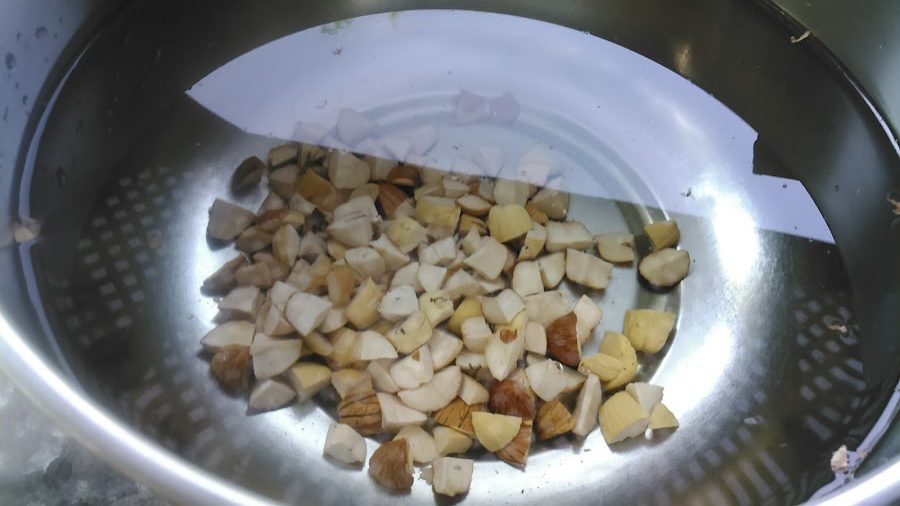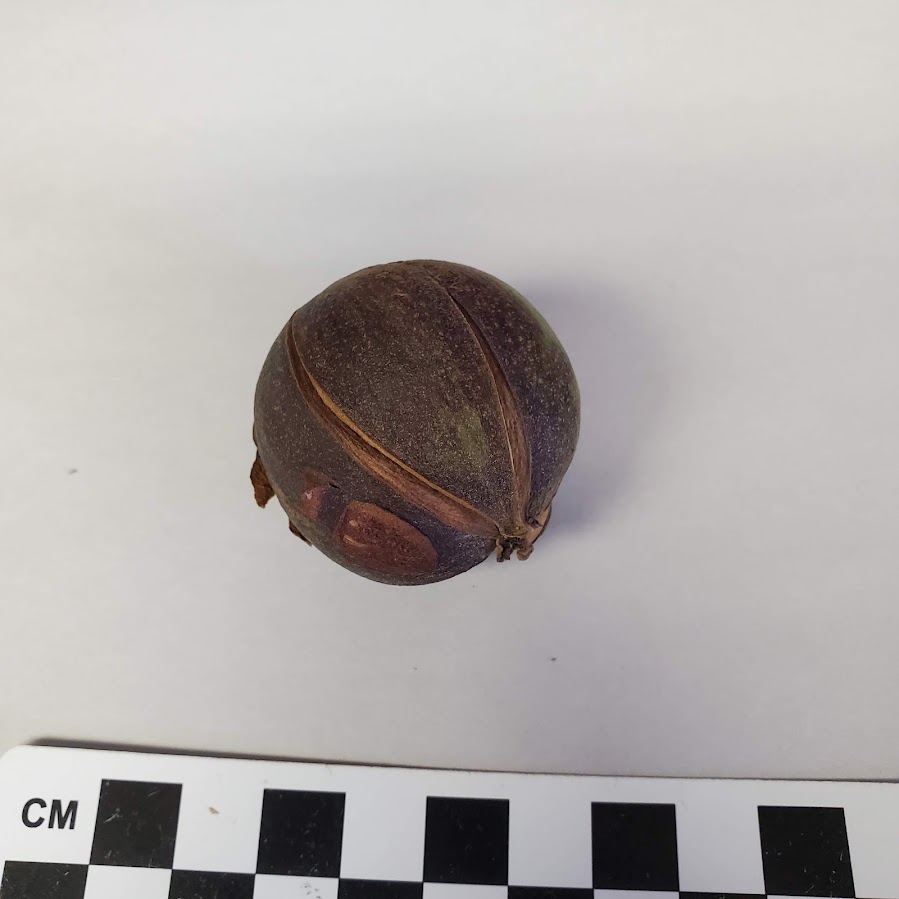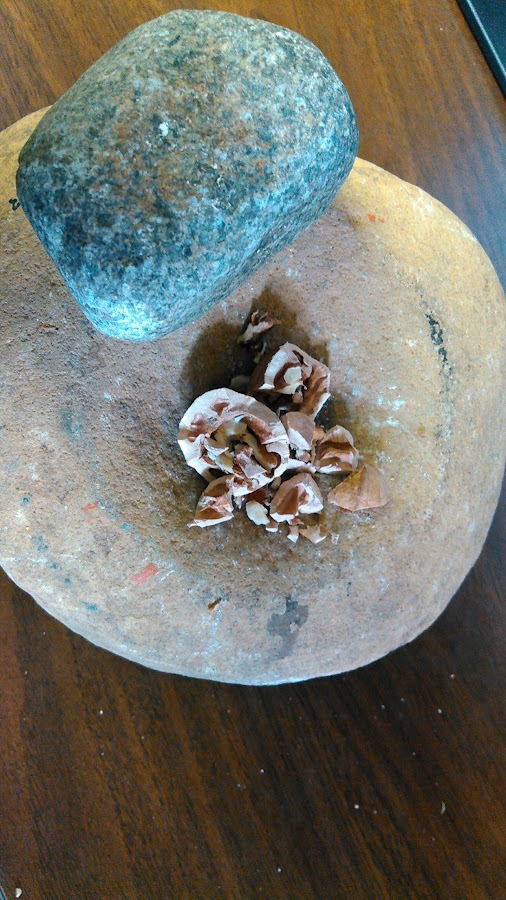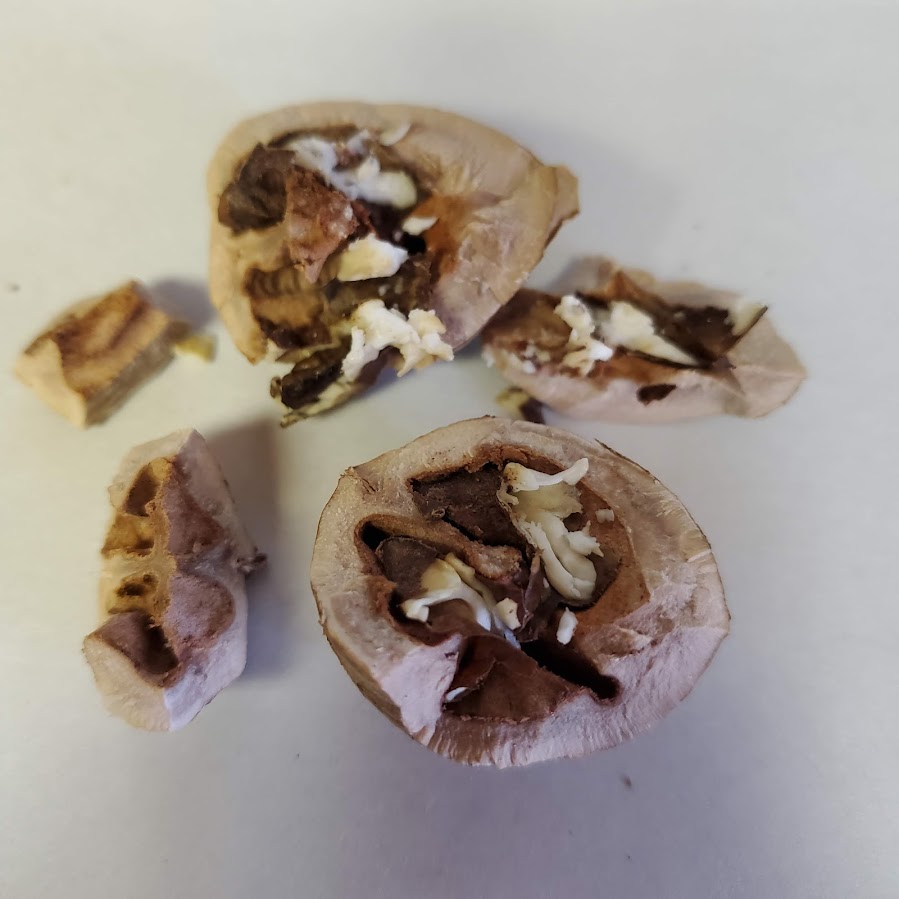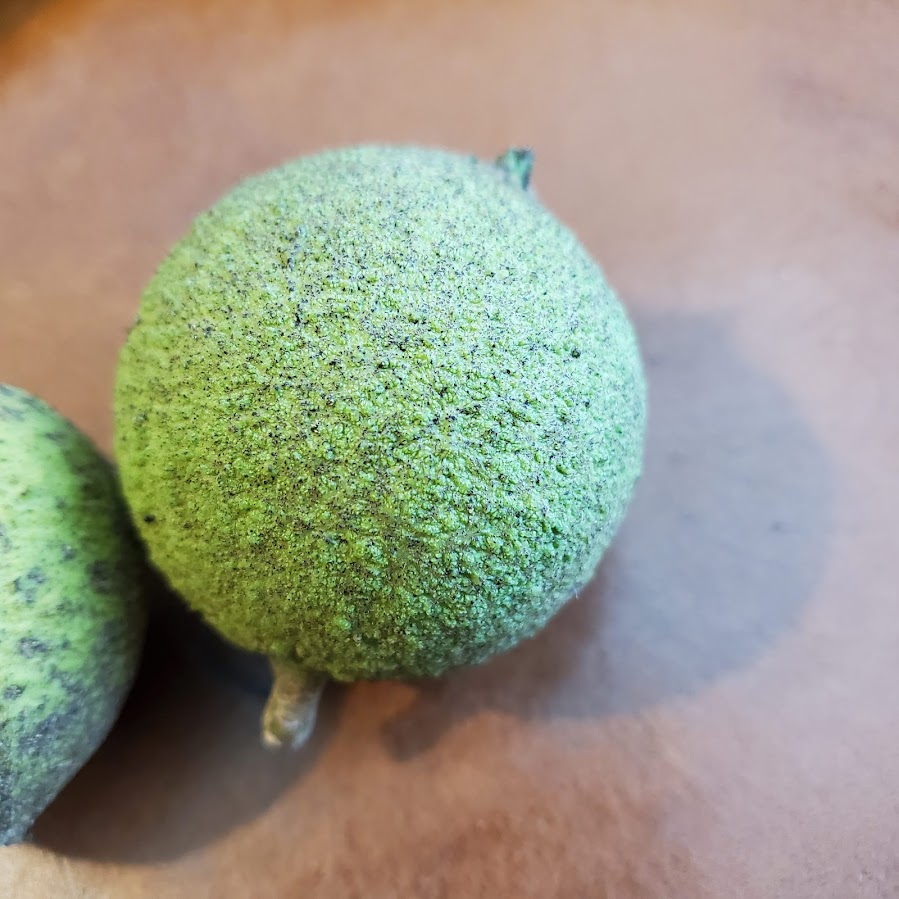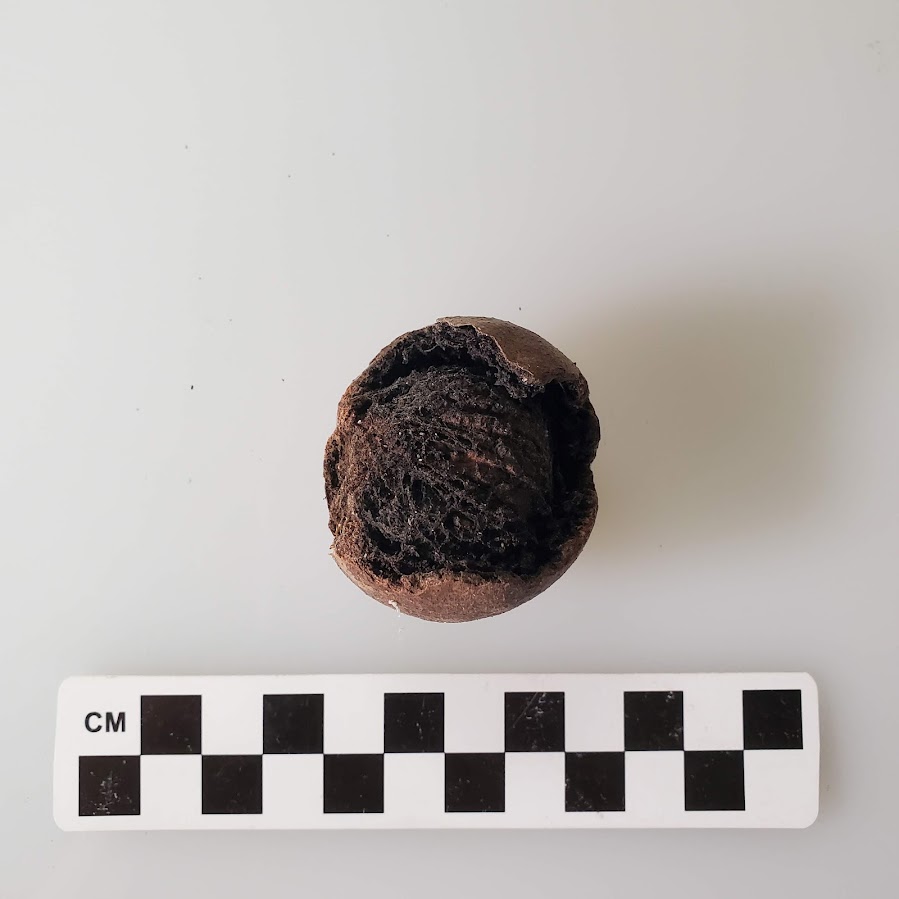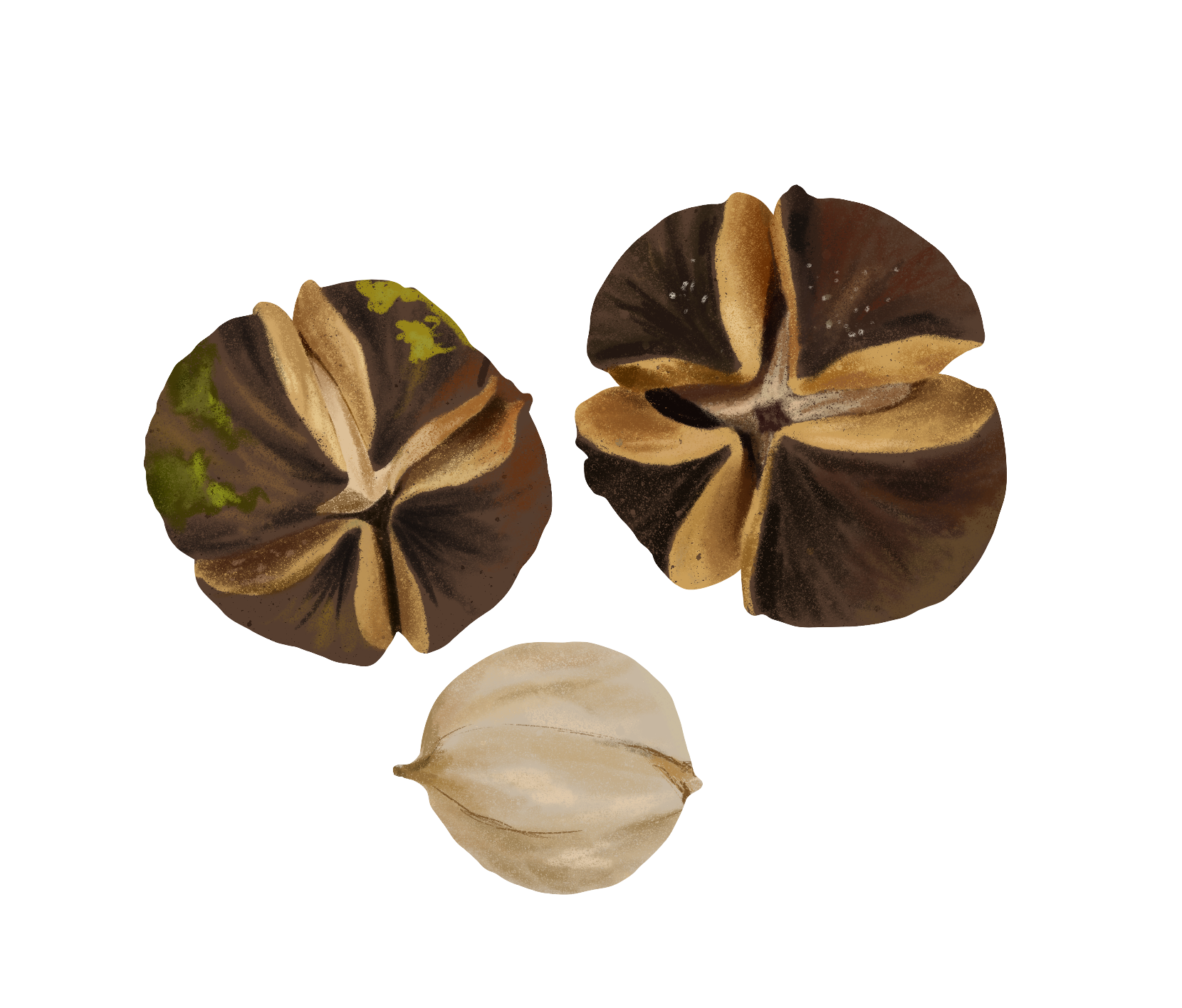
Nuts
Nuts were a very important food source for Native people of Arkansas and the wider Southeastern Woodlands. Not only are nuts great sources of protein and good fats, they are storable. If roasted, nuts can be stored and eatten over winter, a time when other plant food resources are scarce. Acorns, hickory nuts, and walnuts were some of the most important nuts for people living in Arkansas.
Acorns
(Quercus sp.)
Hickory Nuts
(Carya sp.)
Black Walnut
(Juglans nigra)
References
Abrams, Marc D., and Gregory J. Nowacki
2008 Native Americans as Active and Passive Promoters of Mast and Fruit Trees in the Eastern USA. The Holocene 18(7): 1123-1137.
Fritz, Gayle J.
2001 Ethnobotany of Ku-Nu-Che: Cherokee Hickory Nut Soup. Journal of Ethnobotany 21(2):1-27
Gardner, Paul S.
1997 The Ecological Structure and Behavioral Implications of Mast Exploitation Strategies. In People, Plants, and Landscapes: Studies in Paleoethnobotany, edited by Kristen J. Gremillion, pp. 161-178. University of Alabama Press, Tuscaloosa.
Hillard, Jerry E.
1975 Prehistoric Ozark Settlement-Subsistence and Nut Resource Utilization. Unpublished Master’s Thesis, East Carolina University.
Moore, Christopher R., and Victoria G. Dekle
2010 Hickory Nut Bulk Processing and the Advent of Early Horticulture Economies in Eastern North America. World Archaeology 42(4):595-608.
Scarry, C. Margaret
2003 Patterns of Wild Plant Utilization in the Prehistoric Eastern Woodlands. In People and Plants in Ancient North America, edited by Paul E. Minnis, pp. 50-104. Smithsonian Institution, Washington.
Simon, Mary L.
2009 A Regional and Chronological Synthesis of Archaic Period Plant Use in the Midcontinent. In Archaic Societies: Diversity and Complexity Across the Midcontinent, edited by Thomas E. Emerson, Dale McElrath, and Andrew C. Fortier, pp. 81-114. State University of New York Press, Albany.
Talalay, Laurie, Donald R. Keller, and Patrick J. Munson
1984 Hickory Nuts, Walnuts, Butternuts, and Hazelnuts: Observations and Experiments Relevant to their Aboriginal Exploitation in Eastern North America in Experiments and Observations on Aboriginal Wild Plant Food Utilization in Eastern North America, edited by Patrick J. Munso, pp. 338-359. Indiana Historical Society Prehistoric Research Series VI(2).


